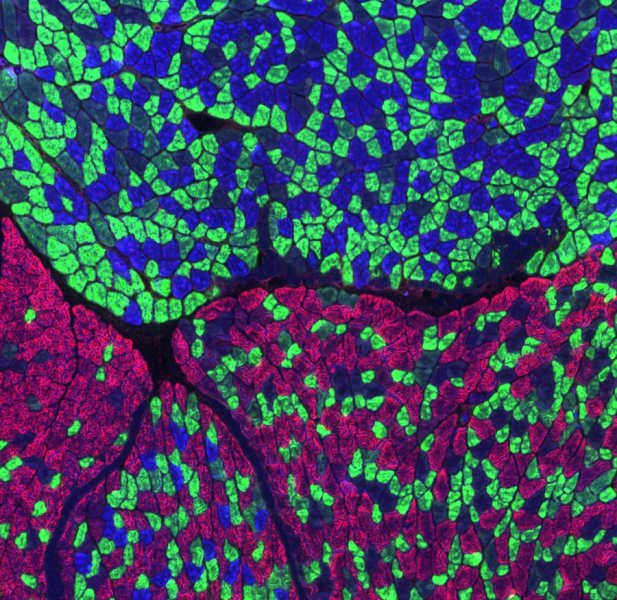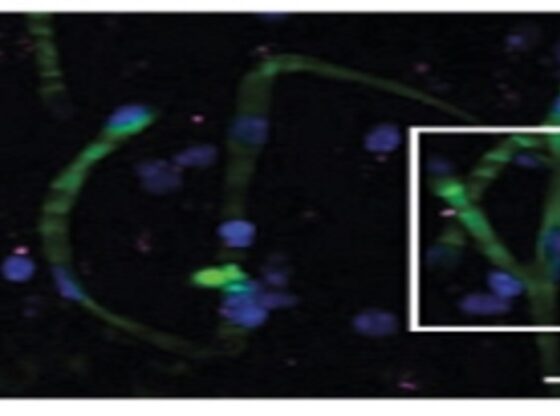American researchers have found the first working so-called ‘Exercise-in-a-pill’, a new drug that builds on the chemical signals that occur in the muscles when exercising.

We are learning more and more about what exactly happens in our bodies during and after exercise. This knowledge also allows us to increasingly approach mimicking the effects of exercise with a pill, chemical substances that cause the same reactions that result in all the good effects of exercise.
Mimicking exercise
Ron Evans and his team of researchers at Salk Institute in California are close to achieving an ‘Exercise-in-a-pill’. Besides mimicking the health effects of exercise, the drug they have developed called PPAR (peroxisome proliferator-activated receptor) also result in remarkable performance enhancements.
When given to mice, they can run 70 percent longer, without any adaptive training to facilitate this performance enhancement. Mice in the control group could run about 160 minutes before exhaustion. Mice on the drug, however, could run about 270 minutes – about 70 percent longer.
PPAR is a receptor protein that functions as to regulate the expression of genes. It acts as a genetic switch, the muscles, and the body reacts as though stimulated by training. The resulting physiological effects are as if directly caused by exercise, becoming highly responsive to insulin and with muscles shifting from burning carbohydrates (glucose) to becoming more effective at burning fat
The team found 975 genes whose expression changed in response to the drug, either becoming suppressed or increased. These genes are involved in and regulate the breaking down and of burning fat. Somewhat surprisingly, genes that were suppressed were related to breaking down carbohydrates for energy.
No exercise replica
The body adapts to this chimeric induced exercise to facilitate some of the same biological effects that would be the results for a well-behaved marathon runner. The researchers stress however that it is is not identical to training, but the mice do get many of the same benefits. They become slimmer, becomes more energetic, and even have healthier brains.
The muscles of mice that received PPAR did not exhibit some other that typically accompany aerobic fitness: additional mitochondria, more blood vessels and a shift toward the type of muscle fibers that burn fat rather than sugar.
Health benefits
The study, published Cell Metabolism on May 2, 2017, deepens our understanding of aerobic endurance and could offer people with heart conditions, pulmonary disease, type 2 diabetes or other health limitations a hope of achieving those benefits pharmacologically.
Although the drug is intended for people who cannot exercise due to illness or mobility and for the obese, the effects of the drug also exhibit the effects of doping.
Reference:
Weiwei Fan, Wanda Waizenegger et al. PPARδ Promotes Running Endurance by Preserving Glucose http://dx.doi.org/10.1016/j.cmet.2017.04.006











![OpenAI. (2025). ChatGPT [Large language model]. https://chatgpt.com](https://www.illustratedcuriosity.com/files/media/55136/b1b0b614-5b72-486c-901d-ff244549d67a-350x260.webp)
![OpenAI. (2025). ChatGPT [Large language model]. https://chatgpt.com](https://www.illustratedcuriosity.com/files/media/55124/79bc18fa-f616-4951-856f-cc724ad5d497-350x260.webp)
![OpenAI. (2025). ChatGPT [Large language model]. https://chatgpt.com](https://www.illustratedcuriosity.com/files/media/55099/2638a982-b4de-4913-8a1c-1479df352bf3-350x260.webp)








